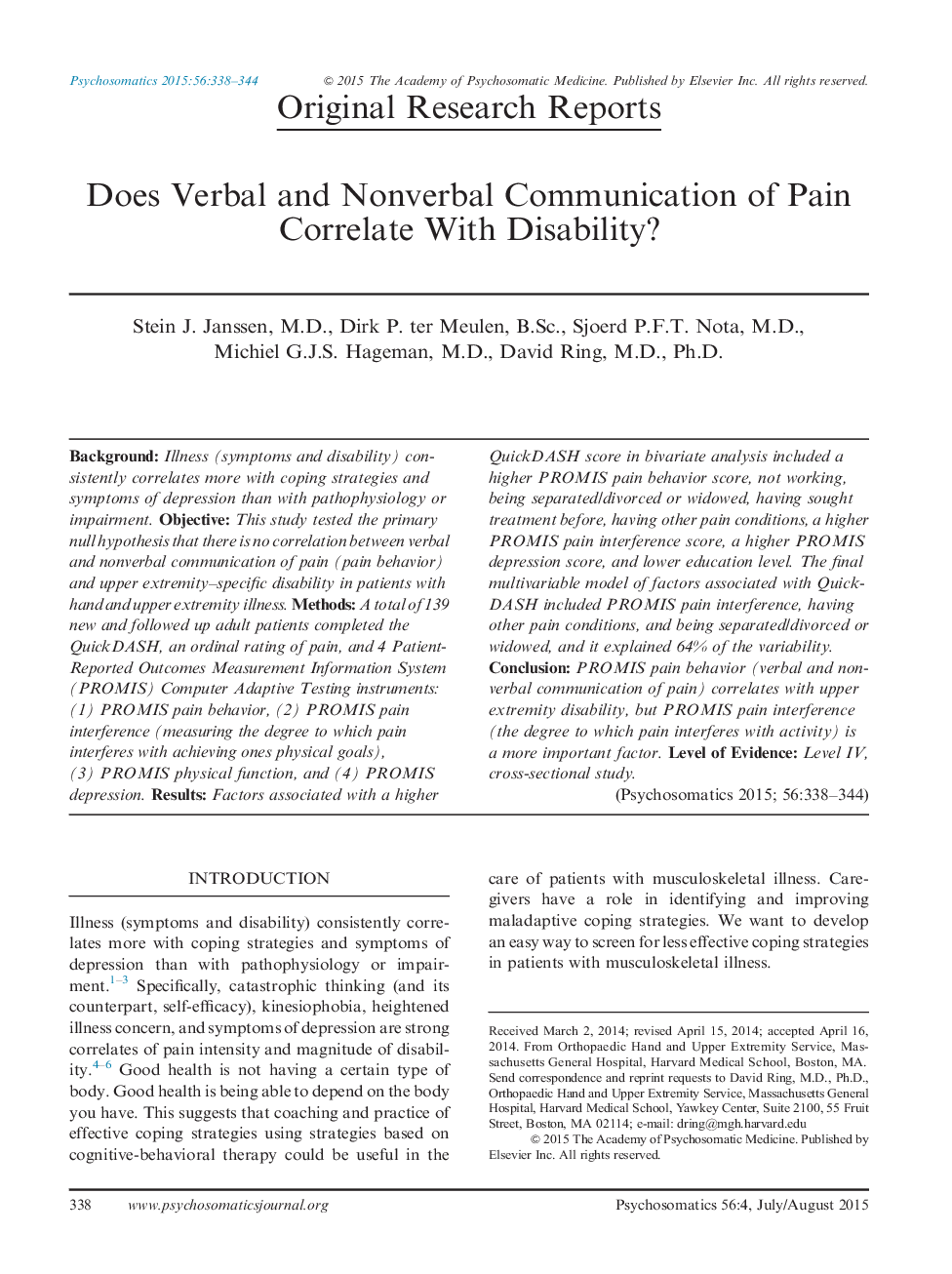| Article ID | Journal | Published Year | Pages | File Type |
|---|---|---|---|---|
| 337776 | Psychosomatics | 2015 | 7 Pages |
BackgroundIllness (symptoms and disability) consistently correlates more with coping strategies and symptoms of depression than with pathophysiology or impairment.ObjectiveThis study tested the primary null hypothesis that there is no correlation between verbal and nonverbal communication of pain (pain behavior) and upper extremity–specific disability in patients with hand and upper extremity illness.MethodsA total of 139 new and followed up adult patients completed the QuickDASH, an ordinal rating of pain, and 4 Patient-Reported Outcomes Measurement Information System (PROMIS) Computer Adaptive Testing instruments: (1) PROMIS pain behavior, (2) PROMIS pain interference (measuring the degree to which pain interferes with achieving ones physical goals), (3) PROMIS physical function, and (4) PROMIS depression.ResultsFactors associated with a higher QuickDASH score in bivariate analysis included a higher PROMIS pain behavior score, not working, being separated/divorced or widowed, having sought treatment before, having other pain conditions, a higher PROMIS pain interference score, a higher PROMIS depression score, and lower education level. The final multivariable model of factors associated with QuickDASH included PROMIS pain interference, having other pain conditions, and being separated/divorced or widowed, and it explained 64% of the variability.ConclusionPROMIS pain behavior (verbal and nonverbal communication of pain) correlates with upper extremity disability, but PROMIS pain interference (the degree to which pain interferes with activity) is a more important factor.Level of EvidenceLevel IV, cross-sectional study.
